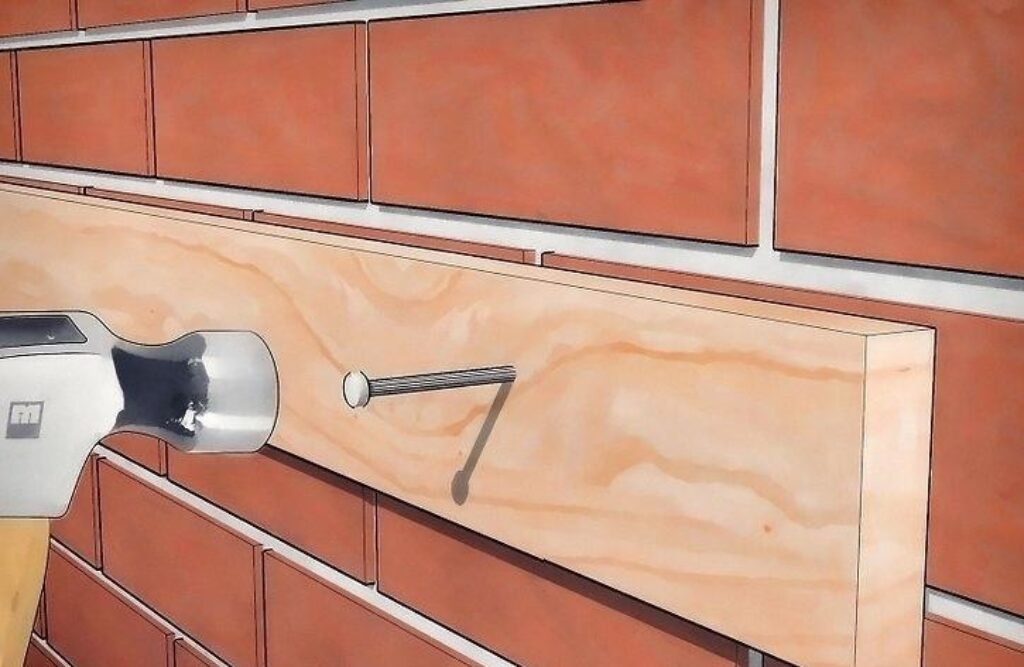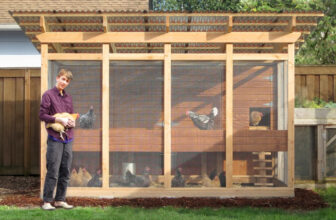This post focuses on the processes of attaching wood to concrete.
You will learn how to anchor wood to concrete by following careful and straightforward steps. With the right tools and equipment in your arsenal, attaching wood to concrete can be a seamless process.
Read on to learn more.

What is Concrete Fastening?
In recent times, carpenters and home construction engineers have developed better ways to attach wood to concrete. Before now, the best option for concrete fastening was the use of hardened nails.
However, in present times, a variety of fasteners are available to ease the process of concrete fastening. In fact, fasteners simplify the procedures entailed in anchoring wood or metal to concrete.
Fasteners are available as:
- Light-duty fasteners
- Medium-duty fasteners
- Heavy-duty fasteners
Note, nonetheless, that all three types of fasteners can be interchanged depending on the purpose you have in mind.
These options of fasteners go a long of reducing the stress of homeowners who need to anchor wood to concrete.
Usually, using concrete when building or constructing a house can be a daunting experience. Many homeowners know that concrete is often inevitable. However, the difficulty which is associated with the fastening process has been removed through the use of fasteners.
While professional craftsmen hardly have any problems with attaching wood to concrete, amateur craftsmen may find this process challenging.
Nevertheless, the tools in this post will guide you and enable you to gain expertise when using concrete materials.
Tools Required for Attaching Wood to Concrete
Before you begin a project which involves fastening wood to concrete, you need to identify the ideal method or tools for you.
Generally, the fastening process includes tools such as:
- Concrete fasteners
- Permanent marker
- Concrete drill bit/screwdriver
- Concrete screws
- Copper wore
- Mortar nails
- Hammer
- Goggles/Eye protection
- Heavy-duty gloves
Ear plugs
Now, your use of the above tools and materials depends on which fastening method you adopt.
Step 1: Attach Wood to Concrete Using Fasteners
The first and best solution for attaching wood to concrete is using fasteners.
Fasteners are nail guns also known as powder-actuated guns which are fast and easy. This process doesn’t require any measuring or drilling. Instead, you fill the barrel with the right size gun nail and gun shell.
Place the nose of the fasteners against the wood and pull the trigger. The powder in the gun will spur the nail to pass through the wood and into the concrete.
Firing this tool requires little to no physical effort especially when you follow the provided operators’ manual.
If you choose a hammer-set concrete fastener instead, ensure that you make a mark on the board and drill right into the middle of it. Clear the hole using a vacuum or syringe blower.
When drilling, ensure you create a hole that passes through the entire wood so you can access the concrete easily.

Step 2: Nailing Mortal Nails through Wood to Concrete
If you consider nailing wood to concrete, you might prefer to use mortar nails and hammers. This nailing process is the least preferred option due to the fact that mortar nails are normally fragile except the concrete is held by a mortar.
Also, using mortar nails to attach wood to concrete is a low-cost and low-quality method especially when the nails are not long enough.
As a matter of fact, mortar nails with ¾ inch provide more guarantee that the wood will remain glued to the concrete. And you can only get the best of nailing when you nail the mortar directly rather than the concrete which can break or shatter.
The downside of this mortar is that it requires more hammering strength. Because the aim is to drive the nail through the wood into the mortar and not the concrete, you need to hammer forcefully until the full body of the nail is no longer visible.
Skip this process if you would prefer a simpler, more effective method of attaching wood to concrete.
Step 3: Drive Concrete Screws into Wood and Concrete
A better alternative for anchoring wood to concrete is the concrete screw method. This method is gaining more popularity in the woodwork industry because it only requires the craftsman to drill a hole through the wood and into the concrete and drive the screw in.
The best part of this procedure is that you don’t have to nail or hammer intensively. Another brilliant benefit of this method is that you can remove the screw whenever you have a need to move the wood material.
For the drilling, you need a concrete drill bit or a screwdriver, though a drill is more accurate and dependable. Before you drill, make use of a permanent marker to mark the exact areas where you intend to drive the concrete screw into.
One basic step you shouldn’t ignore is the need to use the drill recommended by the manufacturer. Usually, the manufacturer’s specification ensures that you drill correctly so that the threads of the concrete screw can grip the edges of the hole which has been made into the wood and concrete.
Further, when you drill, ensure that the hole has a depth of ¼ inches in order to prevent the screw from falling out after a while.
Most heavy-duty hex, slotted, and Phillips-head style screws have a diameter of ¼ inches to 3/16 inches. Also, they’re usually 3 inches to ¾ inches long.
Additionally, ensure that you clean the hole of every dust particle which may have appeared due to the drilling process. A clear hole always allows for a perfect attaching job.
Final Thoughts
In short, this post has discussed the best practices for attaching wood to concrete. We focused on three key methods: concrete screws, mortar nails, and fasteners.
Your choice of fastening tool and materials should be based on the type of project you’re working on. Also, if you prefer the easiest and fastest method of attachment, consider the powder-actuated gun. This method demands little to no force and is time-efficient.
With the guidelines you’ve read above, we hope your woodwork projects will be hitch-free and rewarding.








